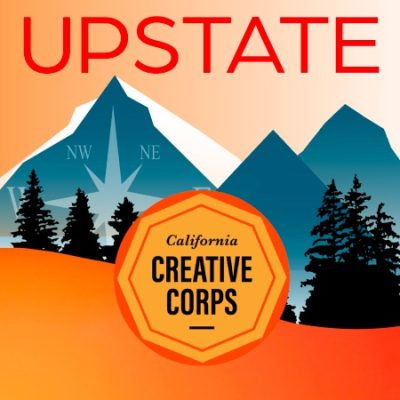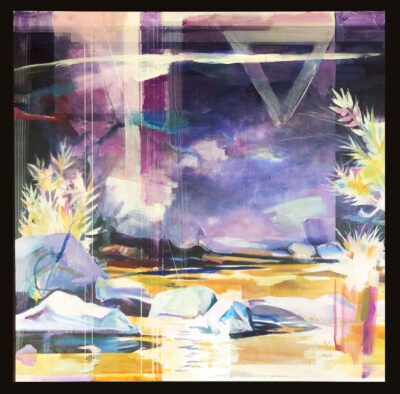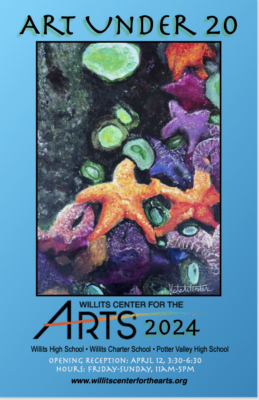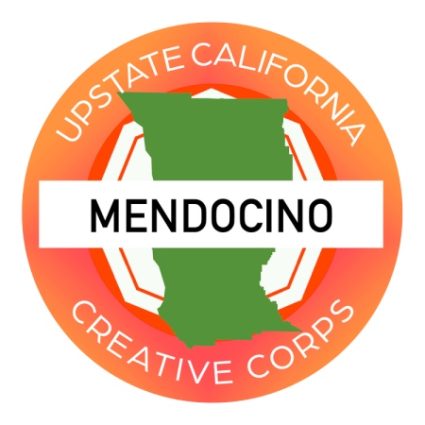
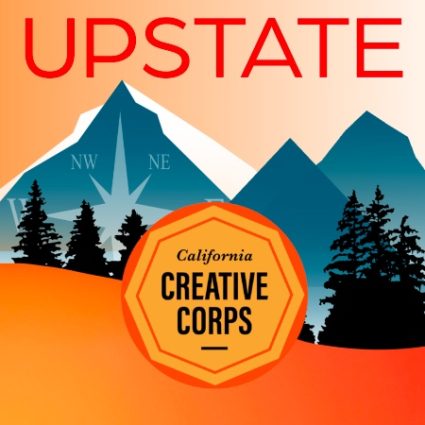
Upstate California Creative Corps
CONGRATULATIONS Upstate California Creative Corps Grantees!
Upstate California Creative Corps grants have been awarded in three categories: Individual Artists and Culture Bearers working solo or in small groups; Community Residencies ensuring collaborative efforts in building awareness and engagement processes between artists and culture bearers and social service organizations, units of government, and Tribal authorities; and Regional or Multi-County Coalitions creating systems and processes with long lasting impacts.
MENDOCINO GRANTS
The Acorn & Abalone Project
Indigenous artists of Coastal & Northern Pomo (Antoinette Ascencio), Southern Pomo (Michael Racho), and Tongva-Chumash (Monique Sonoquie) descent, will engage Tribal and rural communities, bringing community awareness about the importance of conservation and climate in relation to Traditional arts and environmental sustainability to support the well-being of current and future generations.
A Naturalist’s Guide to the Berryessa Snow Mountain National Monument
Daniel LoPilato will create a hybrid literary work comprised of a book-length naturalist’s guide to Northern California’s Berryessa Snow Mountain National Monument, and a series of interactive digital modules promoting public health and engagement with Berryessa Snow Mountain National Monument’s unique ecosystem, in both English and Spanish.
Pieced Together: Recovery Through Art Therapy
Deep Valley Arts Collective will provide people recovering from substance abuse with a series of guided art therapy workshops. Working with established substance abuse programs and organizations, a series of collage workshops culminating in a gallery exhibition, a book, and a multimedia art presentation we, will form community bonds, build resilience, and create awareness for public health resources.
Revitalizing Traditional Pomo Basketry Arts for Tribes in Mendocino and Lake Counties
Corine Pearce will continue reawakening endangered Pomo weaving arts traditions by offering classes to brand-new, beginning, intermediate, and advanced weavers throughout a 7000-square-mile Tri-County area encompassing ancestral Pomo territories. Her instruction includes training in material procurement and processing, following an intergenerational “trainer of trainers” model to enable a sustainable legacy of ongoing cultural revitalization.
Round Valley Reader: Past, Present, Future
Jenn Procacci and Michelle Peñaloza will create Round Valley Reader, a community focused publication showcasing the trajectory of Round Valley, and exploring imaginings for the future of our rural community in the face of climate change, wildfire pressure, economic and social justice challenges, and the hardships that are associated with being in the lowest quartiles of the California HPI. With joint experience in engaging communities through journalism, storytelling, creative writing and documentation, two artists will explore the past, report the present, and work with the community to imagine our collective future using these methods.
Willits Center for the Arts Mendocino Artist Corps
Willits Center for the Arts will curate and marshal a Mendocino County Artists Corps of 19 Local Artists and Culture Bearers who will provide after school dance and art workshops, monthly art history lectures for youth and elders, arts summer camps, monthly dance and visual art workshops and programming targeted to uplift and engage youth, families and seniors as part of a campaign to raise awareness for increasing mental health outcomes, civic engagement and social justice opportunities in a community which struggles in these areas, as highlighted by our performance in the lowest quartiles of the California Healthy Places Index.
Where Do We Go From Here
Ross Travis and collaborators will inspire community action to counter the effects of climate change on youth in Mendocino, Lake and Glenn Counties through a traveling, multi-disciplinary bouffon theater piece (also filmed and edited into a documentary) that uses a powerful mix of irreverent comedy, tragedy, shamanistic ritual and interactive ecstatic play to inform, provoke and provide tools for agency and community action on this issue.
IMPORTANT LINKS:
The Upstate Creative Corps also has a Facebook page https://www.facebook.com/UpstateCaliforniaCreativeCorps where they will share information and events related to the grant.
Applicants and others may stay networked on this page: https://www.facebook.com/groups/creativecorpsconversationcafe
Archived California Creative Corps GRANTWRITING INSPIRATION:
The California Healthy Places Index (https://www.healthyplacesindex.org) offers a springboard for formulating grant proposal ideas. Healthy Mendocino (https://www.healthymendocino.org/) is also an excellent source of data
Examples of artists working in and within municipal governments (from Animating Democracy, an old program of Americans for the Arts) here. http://animatingdemocracy.org/collection/artists-working-and-within-municipal-governments)
Examples of ways that governments and / or social service organizations could use the Creative Corps to fund artist-led initiatives for community health, wellbeing, and / or engagement (credit: Leslie Castellano): https://docs.google.com/document/d/1GNpB6k9U2pVetVAij3KyzotMd9rcZ-lDJ7GIrd7NXuk/edit
Springboard for the Arts / Art Train is a virtual technical assistance program for artists, municipal agencies, and community-focused organizations in all sectors, in communities of all sizes across the nation.
Artists Support Improved Public Health in Communities – a great conversation between between some Rhode Island folks, including Rhode Island’s State Council on the Arts, its Department of Health, Department of Art, Culture + Tourism, State Health and Human Service’s Artist in Residence, State Health and Human Service’s Artist in Residence. See here

